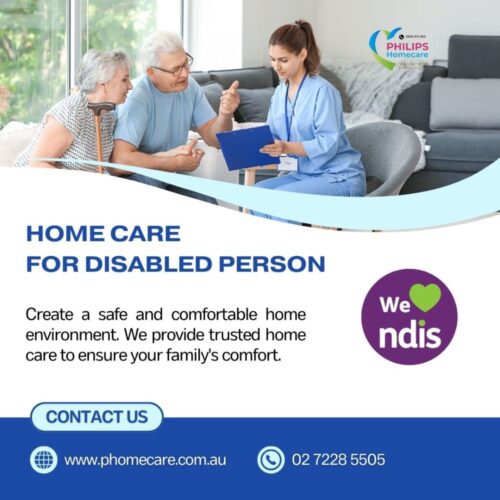
How to Train Family Members in Effective Home Care
- City: Sydney
- State: New South Wales
- Country: Australia
- Zip/Postal Code: 2205
- Contact No: 0272285505
- Email ID: [email protected]
- Website: https://www.phomecare.com.au/2021/11/13/best-disability-homecare-in-sydney/
- Listed: May 1, 2025 6:50 am
- Expires: 15 days, 18 hours
Description
Providing home care for a disabled person can be both a rewarding and challenging responsibility. When a loved one requires assistance due to a disability, it is important for family members to learn the necessary skills and techniques to provide effective care. Training family members in home care not only ensures that the disabled person receives the attention and support they need, but it also reduces the physical and emotional strain on caregivers. Below are key steps to train family members in providing effective home care for a disabled person.
1. Understanding the Needs of the Disabled Person
The first step in effective home care for a disabled person is to thoroughly understand their specific needs. Disabilities can vary widely, and each person may require different types of care. Begin by assessing the individual’s physical, emotional, and cognitive abilities. For instance, if the disabled person has limited mobility, caregivers will need to learn how to assist with transfers and prevent falls. For those with cognitive impairments, family members should focus on communication strategies and creating a safe, structured environment.
2. Basic Caregiving Skills
Training family members in basic caregiving skills is crucial for providing high-quality home care for a disabled person. Key skills to cover include:
Personal hygiene assistance: Show caregivers how to assist with bathing, grooming, and dressing. Emphasize the importance of maintaining dignity and privacy while providing help with personal care tasks.
Feeding and nutrition: Teach family members how to assist with meals, ensuring that the disabled person is receiving the proper nutrition. They should also be aware of any dietary restrictions or preferences.
Mobility assistance: Demonstrate safe methods for helping the person move around, such as transferring them from a bed to a wheelchair, or using mobility aids effectively. Training in proper body mechanics to prevent injuries to both the caregiver and the person receiving care is essential.
Medication management: Educate family members on how to manage medications, including administering them on time and monitoring for any side effects or complications.
3. Creating a Safe Environment
A key aspect of home care for a disabled person is ensuring that the living space is safe and accessible. Train family members to make necessary modifications in the home, such as installing grab bars in bathrooms, ensuring clear pathways for wheelchairs or walkers, and organizing the home to reduce clutter that may pose a tripping hazard.
It’s also important to create an emergency plan in case of medical issues or accidents. Family members should know how to respond to medical emergencies, such as choking or falls, and should have the necessary contact information readily available for healthcare providers.
4. Communication Techniques
Effective communication is vital in home care for a disabled person, especially for those who have speech or cognitive impairments. Training family members on the appropriate communication techniques can enhance the caregiving experience. For example, when dealing with someone who has a hearing impairment, caregivers should use clear speech and possibly visual cues to communicate. For those with memory issues, caregivers can develop simple routines and use visual aids, such as picture calendars, to help with daily activities.
Additionally, teaching caregivers to be patient and attentive is essential. Listening carefully to the needs of the disabled person, understanding non-verbal cues, and responding with empathy can make a significant difference in their quality of life.
5. Managing Emotional and Psychological Well-being
Family members should be trained to recognize the emotional and psychological needs of the disabled person. Many individuals with disabilities may experience feelings of isolation, frustration, or depression. Caregivers can be trained in strategies to foster a positive emotional environment, such as encouraging social interaction, engaging in recreational activities, or simply offering a comforting presence.
It’s also important to manage caregiver stress. Family members may become overwhelmed with the demands of home care for a disabled person. Regular communication and support from other family members or a support group can help ease emotional burden and provide the caregivers with a sense of relief and camaraderie.
6. Continuous Education and Support
Training family members in home care for a disabled person is not a one-time task. It requires ongoing education and support. As the needs of the disabled person evolve, family members should stay informed about new caregiving techniques and any changes in the individual’s health. They should also have access to resources, such as online forums, caregiver support groups, and workshops, to stay connected with others who share similar experiences.
7. Involve H
28 total views, 1 today